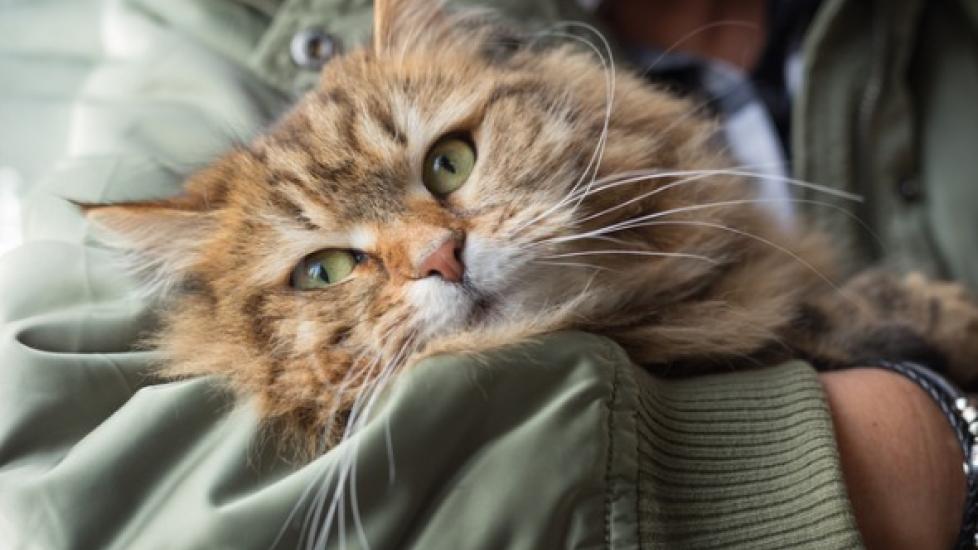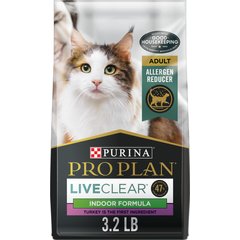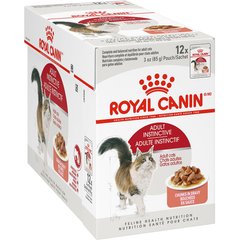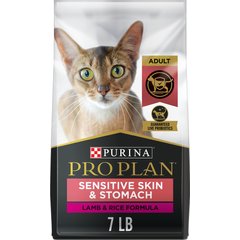What's in Natural Cat Food and Holistic Cat Food?
Cat food labels and advertisements are loaded with pictures of stunningly beautiful cats, artful design, and words—lots and lots of words. Some terms sound meaningful while, in truth, they are not really regulated.
Becoming an informed pet parent and knowing the difference will help you pick out cat foods that not only sound good but are good. This guide will help you understand what natural cat food and holistic cat food are and whether these are actually regulated terms.
What Is Natural Cat Food?
To use the word “natural” in reference to a pet food, manufacturers must adhere to the Association of American Feed Control Officials’ (AAFCO) definition:
A feed or feed ingredient derived solely from plant, animal, or mined sources, either in its unprocessed state or having been subject to physical processing, heat processing, rendering, purification, extraction, hydrolysis, enzymolysis, or fermentation, but not having been produced by or subject to a chemically synthetic process and not containing any additives or processing aids that are chemically synthetic except in amounts as might occur in good manufacturing practices.
“Natural” can refer to specific ingredients—“with natural salmon,” for example—or to the product as a whole.
If the entire cat food is called “natural,” then all the ingredients must be natural except vitamins, minerals, and a few other essential nutrients that are difficult to include otherwise.
To make this distinction clear, manufacturers must label the food as natural (or all-natural or 100% natural) with added vitamins, minerals, and trace nutrients, or something similar.
Obviously, a cat food that contains just one natural ingredient is going to be less “natural” than one that is labeled as “all-natural with added vitamins, minerals, and trace nutrients.”
To get a better idea of the differences between natural and “regular” cat foods, let’s compare two canned salmon cat food examples:
Natural Salmon Canned Cat Food: Salmon, liver, chicken, poultry broth, natural flavors, MINERALS [omitted for simplicity], guar gum, taurine, salt, choline chloride, VITAMINS [omitted for simplicity].
“Regular” Salmon Canned Cat Food: Salmon, meat by-products, liver, poultry broth, fish, artificial and natural flavors, tricalcium phosphate, added color, guar gum, MINERALS [omitted for simplicity], salt, taurine, Red 3, VITAMINS [omitted for simplicity], sodium nitrite (to promote color retention)
By choosing the natural salmon cat food over the “regular” cat food, you can avoid feeding your cat artificial flavors, colors, and preservatives. There are other differences as well, but those don’t have anything to do with the AAFCO definition of “natural.”
Vet Recommended Cat Food
- Purina Pro Plan LIVECLEAR Adult Indoor Formula Dry Cat Food, 3.2-lb bag$18.78Chewy Price
- Hill's Science Diet Adult Multiple Benefit Chicken Recipe Dry Cat Food, 15.5-lb bag$63.99Chewy Price
- Royal Canin Feline Health Nutrition Adult Instinctive Chunks in Gravy Cat Food Pouch, 3-oz, case of 12$26.28Chewy Price
- Purina Pro Plan Adult Sensitive Skin & Stomach Lamb & Rice Formula Dry Cat Food, 7-lb bag$28.08Chewy Price
What Ingredients Are in Natural Cat Food?
Most cat food ingredients can meet the definition of natural because they can be “derived solely from plant, animal, or mined sources.”
Natural cat foods can be made with many different types of meats, carbohydrates, and fats. Notably, meat meals, meat by-product meals, and mixed tocopherols (a type of preservative) can be included in natural cat foods.
While natural cat foods may contain trace amounts of some synthetic compounds, if they occur as part of “good manufacturing practices,” certain ingredients should never be present, including:
-
Propylene glycol
-
Calcium ascorbate
-
Butylated hydroxyanisole (BHA)
-
Butylated hydroxytoluene (BHT)
-
Artificial flavors and colors
What Is Holistic Cat Food?
Unlike “natural,” the word “holistic” is meaningless when it is applied to a cat food.
“Holistic” certainly conjures up images of good nutrition and whole-body health, but the term is completely unregulated. Manufacturers can apply it to any cat food, without regard to its nutritional value or ingredient list.
What Ingredients Are in Holistic Cat Food?
Holistic cat foods may or may not contain ingredients that are barred from natural diets, including artificial flavors, colors, and preservatives. Look at the ingredient list to get a better idea of what’s in a holistic cat food before you buy it. Check out our pet food ingredient glossary to gain a better understanding of each ingredient and what it does.
Is Natural or Holistic Cat Food Better?
Natural cat foods won’t contain some controversial ingredients that are artificial or chemically processed. Holistic foods may, but little research into the potential health drawbacks of these substances has been done in cats.
With that said, the only likely drawback of choosing a natural cat food over other options is the expense. If you have the means and prefer to take a better-safe-than-sorry approach to nutrition, a natural cat food may be a good option.
But keep in mind that the words “natural” and “holistic” in no way imply that a cat food provides all the nutrients, in the right proportions, that cats need to thrive. In order to make sure that a cat food is complete and balance, always look for an AAFCO statement on the label that says something along the lines of:
-
Cat Food A is formulated to meet the nutritional levels established by the AAFCO Cat Food Nutrient Profiles for adult maintenance, growth and reproduction, or all life stages.
OR
-
Animal feeding tests using AAFCO procedures substantiate that Cat Food B provides complete and balanced nutrition for adult maintenance, growth and reproduction, or all life stages.
Talk to your veterinarian if you have questions about what to feed your cat. Together, you and your vet can wade through all your options and pick a food will support your cat’s health, well-being, and longevity.
Featured image: iStock.com/marieclaudelemay




